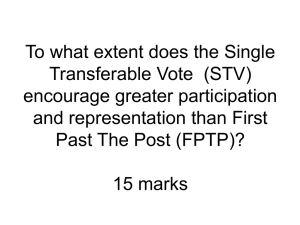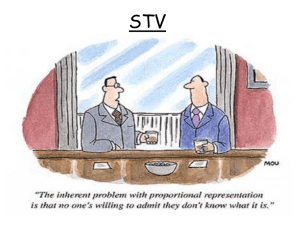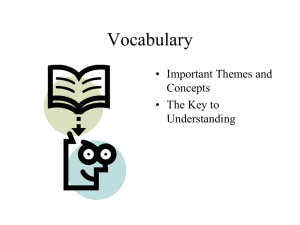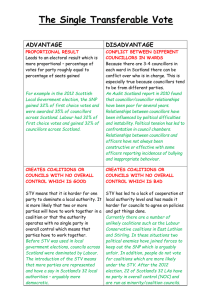STV and FPTP essay plan
advertisement
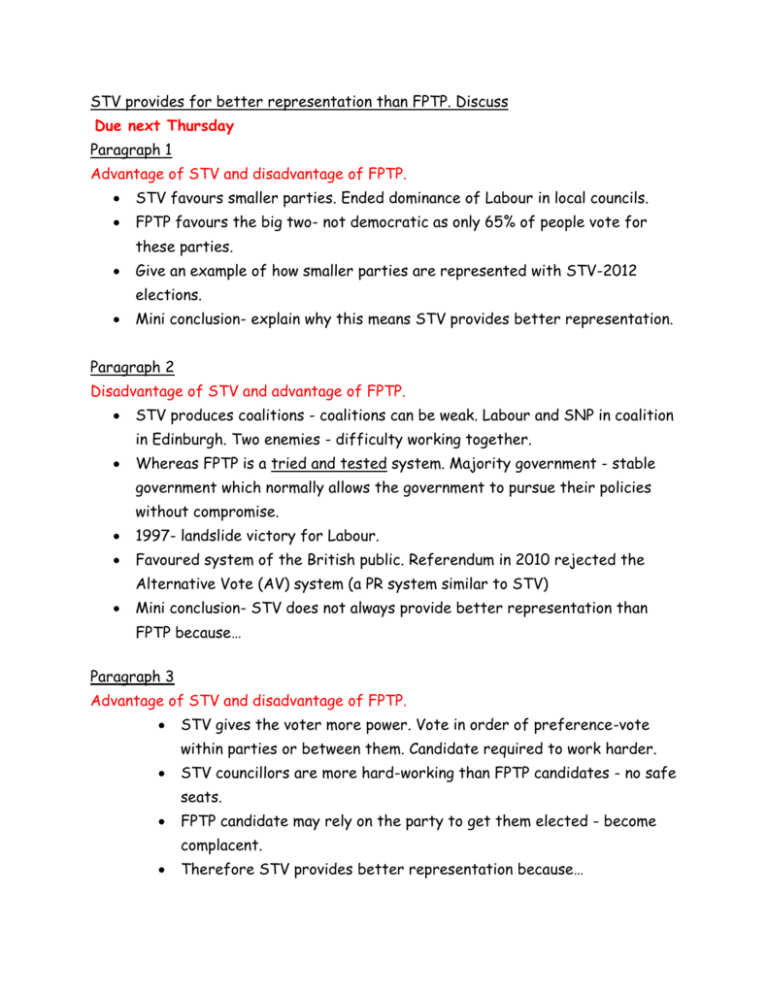
STV provides for better representation than FPTP. Discuss Due next Thursday Paragraph 1 Advantage of STV and disadvantage of FPTP. STV favours smaller parties. Ended dominance of Labour in local councils. FPTP favours the big two- not democratic as only 65% of people vote for these parties. Give an example of how smaller parties are represented with STV-2012 elections. Mini conclusion- explain why this means STV provides better representation. Paragraph 2 Disadvantage of STV and advantage of FPTP. STV produces coalitions - coalitions can be weak. Labour and SNP in coalition in Edinburgh. Two enemies - difficulty working together. Whereas FPTP is a tried and tested system. Majority government - stable government which normally allows the government to pursue their policies without compromise. 1997- landslide victory for Labour. Favoured system of the British public. Referendum in 2010 rejected the Alternative Vote (AV) system (a PR system similar to STV) Mini conclusion- STV does not always provide better representation than FPTP because… Paragraph 3 Advantage of STV and disadvantage of FPTP. STV gives the voter more power. Vote in order of preference-vote within parties or between them. Candidate required to work harder. STV councillors are more hard-working than FPTP candidates - no safe seats. FPTP candidate may rely on the party to get them elected - become complacent. Therefore STV provides better representation because… Paragraph 4 Disadvantage of STV and advantage of FPTP. Poorer representation under STV - large multi-member constituencies. Many councillors representing them. Explain the problem with this…who to go to for advice etc… FPTP simple majority system - strong link created between councillor and people of ward. This shows that FPTP is better because… For STV STV was first used in 2007 for local council elections. Introduced by the Labour- Liberal coalition. Caused friction between LA and the SG as it was felt that it would disadvantage bigger parties. This was true as STV is more likely to produce coalitions. This was evident in For FPTP Used for UK parliament elections was previously used to elect local councils before 2007. More coalitions have been produced. Coalitions can be weak. FPTP produces the 2012 LA election results. See handout. Saw a reduction in Labour’s dominance. Gives the voter more power. Voting in order of preference. Voter can vote within parties and between them. As a result there are no safe seats and the candidate must work hard to gain the vote. Can express preferences between candidates based on their personal attributes. Councillors as a result are more hard working. STV is a system of proportional representation (PR) so notionally fairer. Claim that few votes are ‘wasted’ under STV and that almost every voter gets at least partial representation. To gain election, candidates are required to gain a pre-determined quota of votes. Where this does not happen, the second, third, etc, preference of voters is used until all the representatives are elected. With FPTP post many votes are wasted as the winning candidate does not even need 50% of the total votes to win. strong majority governments. Difficult coalitions formed in the 2012 LA elections. More likely to create conflict. However recent referendum to change the voting system to AV in General Elections- stability of current coalition in Westminster- tuition fees? Simple majority system where the candidate with the most votes wins. FPTP retains close representativeconstituency link and usually produces majority government. STV breaks the link between voter and representative due to large multi-member constituencies. FPTP is a tried and tested system which is easy to understand. Voted to keep it. STV can confuse voters by making them list their preferred candidates. To what extent are the original aims of the welfare state still relevant today? Relevant Eliminating disease- introduction of the NHS. Provides primary and secondary care. Free at the point of need. Collectivist- based on flat rate contributions. Eliminating idleness Labour- ‘hand up not hand out’ Welfare policies designed to get people off welfare and into work. National minimum wage, working tax credits etc. Eliminating ignorance. Free compulsory education up to the age of 16. Free tuition fees in Scotland for higher education. Eliminating Squalor- affordable council housing. Instead of using private landlords. Not relevant NHS has gone through many changes. Competitive tendering. All services not free at the point of need- dentists etc. Cost rationing. Not equal across all regions- postcode lottery of services. Therefore not fully comprehensive and universal. Many benefits are not universal. Means testing. Welfare revolution- making cuts. 2012 Welfare Reform Bill. Huge job losses in public sector. High rates of unemployment. England and Wales tuition fees. In Scotland graduates have to repay loans. Private education system in existence. Right to buy scheme- insufficient quantities of social housing.
